Nature’s Amazing Weavers!
Baltimore Orioles are one of my favorite birds and I watch for them every spring.
My Grandmother liked to tell me a story about how my Grandpa would stand under their blossoming crab apple tree in the spring, and he’d whistle their song. Grandma said the Orioles whistled back, and they’d have long “talks” together.
When I moved to Maine, my mother-in-law Emily put orange halves on a feeder, high in the air. I asked her what birds would eat an orange. Sure enough, Baltimore Orioles flew from the woods around our house to feed on them! Here in Maine, we put the bright fruit out around May 15th. Because this year’s spring is so early, I put mine out today.
Note: If you try this, be sure to switch the oranges out often so the Orioles always have fresh fruit. An orange that’s old or moldy could make them sick. You can hang the halves from the trees, if you don’t have a platform feeder.
Why do Orioles like oranges? It’s not because of their color. The sugar in them gives the Orioles the energy they need before and after a long migration. You might see them feed from hummingbird feeders, too. After a couple of weeks, I won’t see them at my feeders anymore. They mostly eat insects for protein during the summer months.
I also keep natural food on my property for them, too. Trumpet vines and raspberry bushes are just two of their favorites.
I haven’t had a sighting yet this year, but I listen carefully every day for them. In 2019, I had a pair visit several times a day.
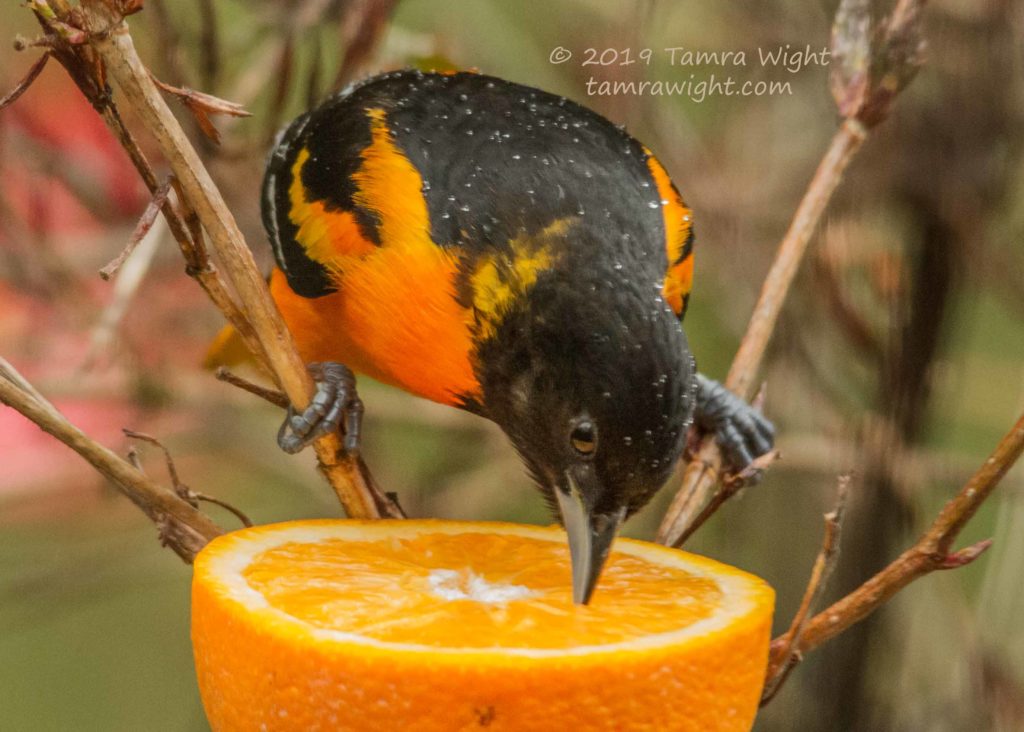
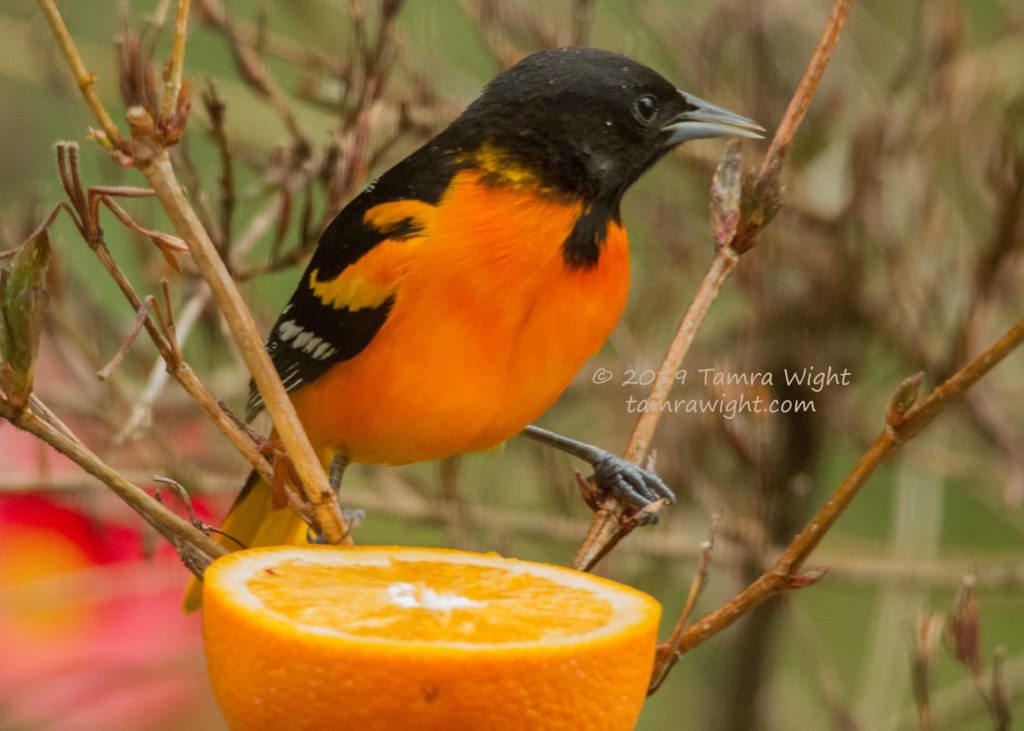
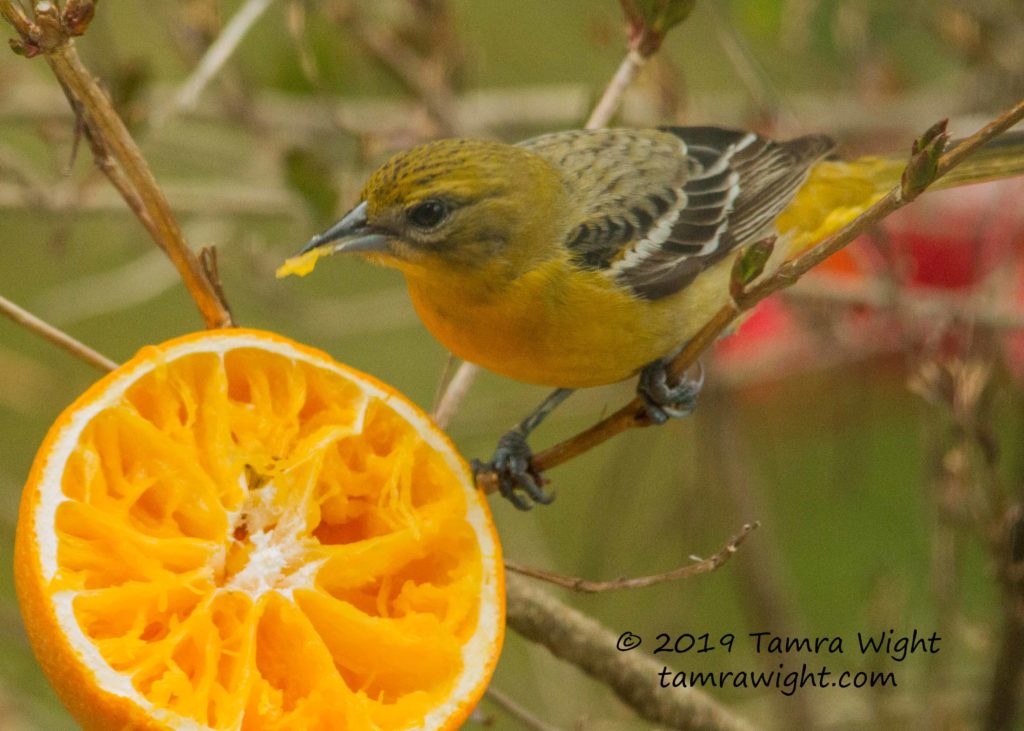
When hunting for Orioles with your binoculars, look up! Orioles normally forage for food and sing loudly from the highest treetops!
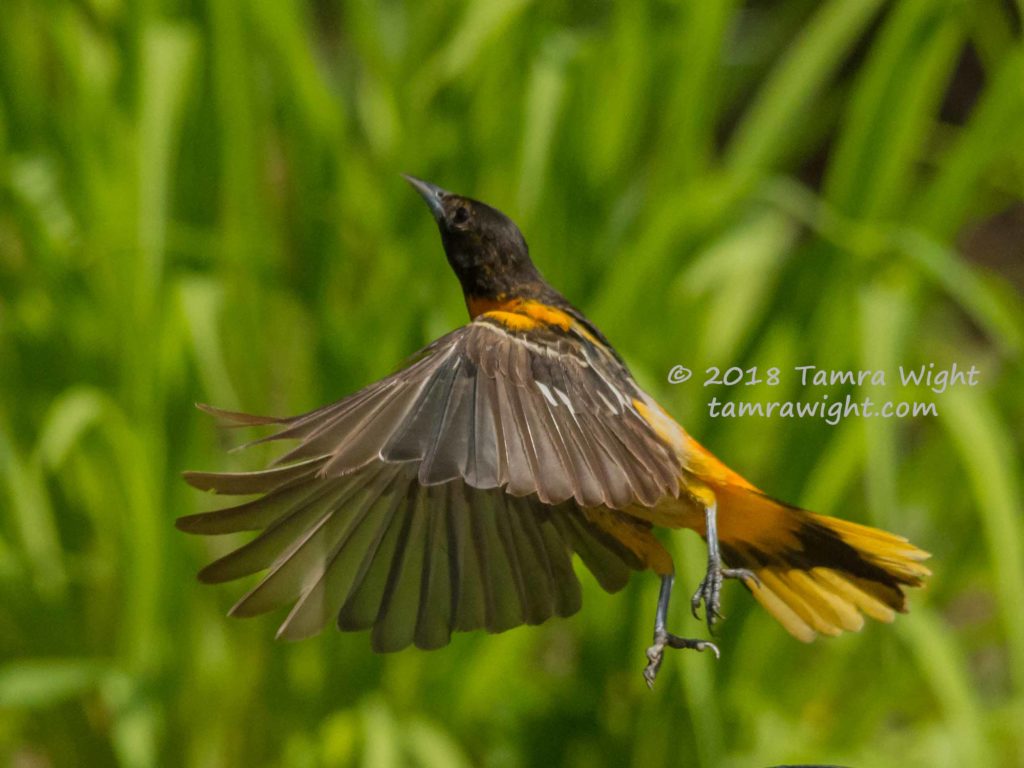
You’ll find them nesting there, as well. Female Orioles create beautiful, carefully woven, sock-like nests n the small, upper branches of a tree.
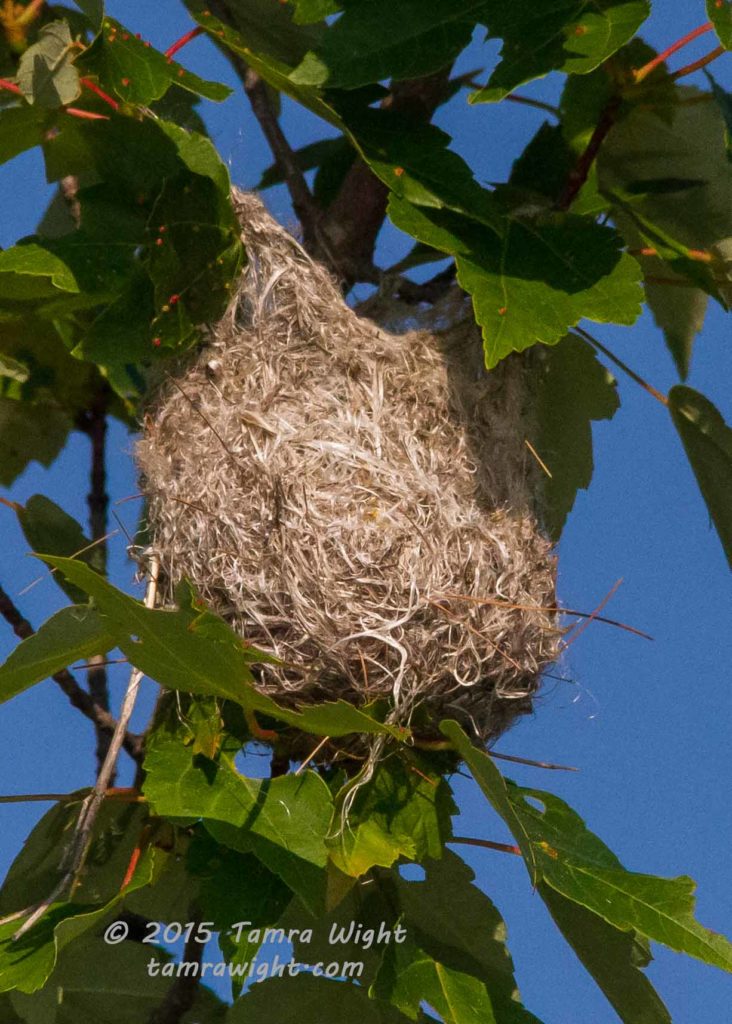
Using fibers such as grass, hairs , wool, bark and grapevines, she’ll weave them in and out with her beak. Sometimes she’ll use fishing line, string, or yarn. It takes about ten days for her to build her nest, and when it’s just right, she’ll line it with grass, hairs, moss, and other soft items.
Orioles lay 4 to 5 bluish-white eggs inside it! The female sits on them for about two weeks. The nests blends in so well with its surroundings, it’s hard to find! They’ll be hanging about 20 feet in the air, but sometimes as high as fifty feet.
Both parents feed their young. I found this nest because I heard the little hungry chicks inside calling for food. (Remember, I have a very, very long lens so I was far away, taking pictures from my kayak)
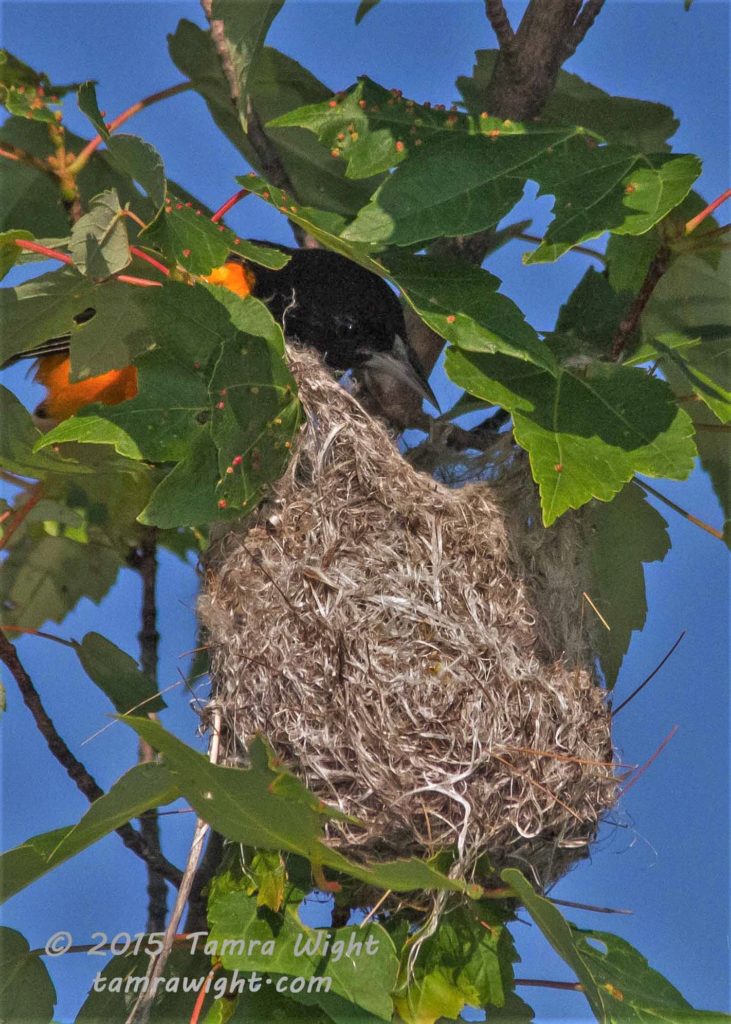
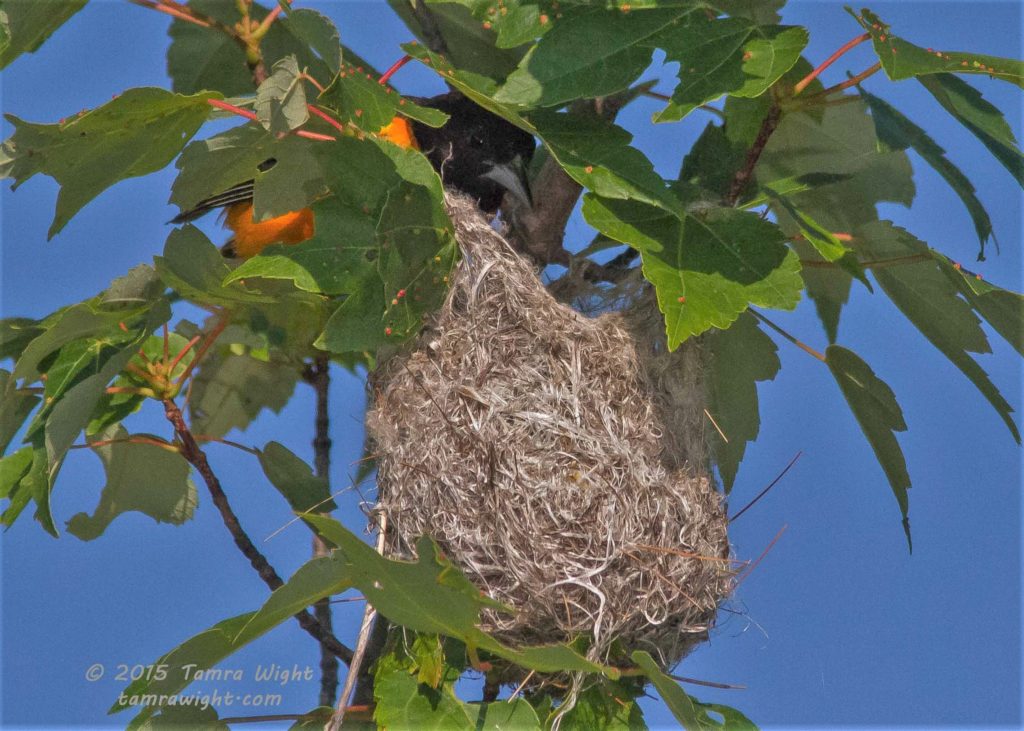
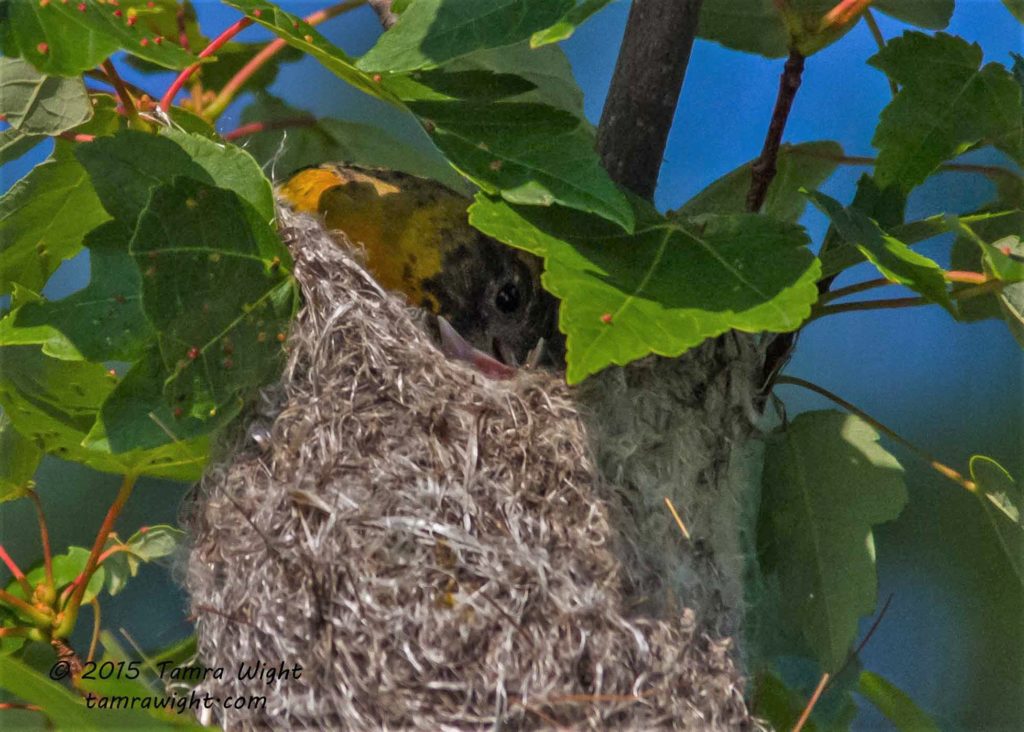
The young leave the nest 12 to 14 days after hatching.
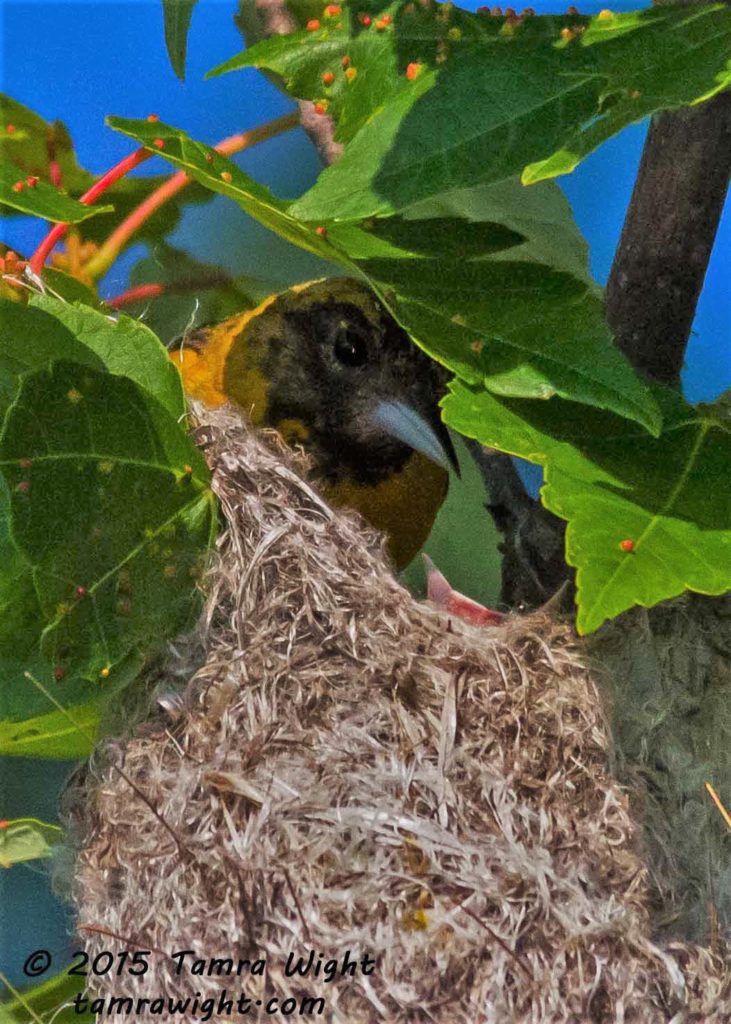
Here’s some more information and a video showing orioles building their nest . . .
